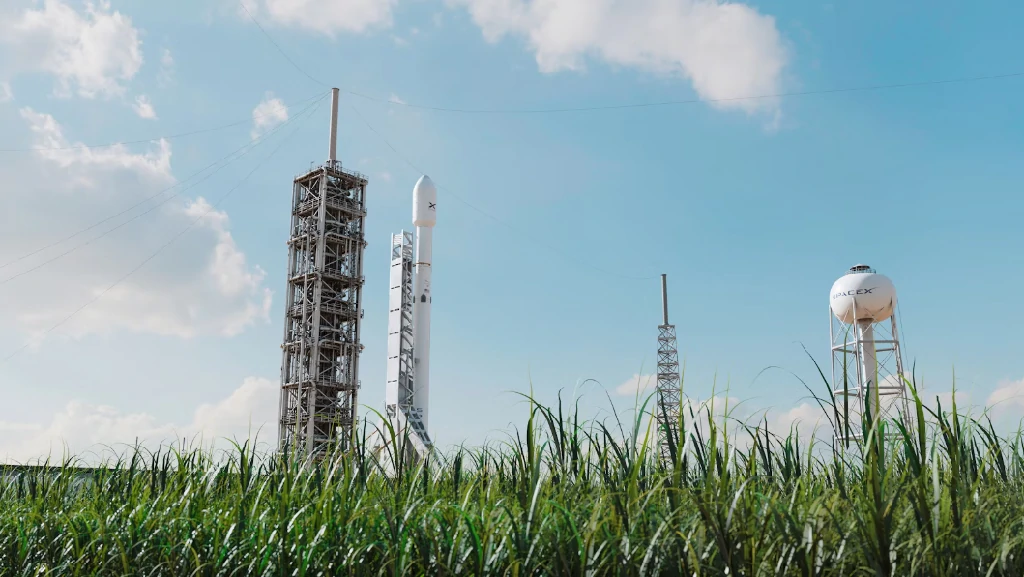The entry of Starlink to Yemen would prove a great step for the country that has been experiencing poor connectivity through the internet for decades. This satellite internet service by SpaceX promises to provide high-speed connections for even the most remote locations around the world. Thus, this develops promise, especially for regions like Yemen with largely damaged or limited traditional infrastructure due to conflict.
We will venture into this paper by knowing what Starlink is, the current state of internet services in Yemen, how Starlink might transform the digital landscape, and what the challenges are attached.
What is Starlink?
Starlink is a satellite internet constellation that SpaceX is constructing. The company aims at connecting remote as well as underserved areas to high-speed, low-latency internet service. Unlike conventional internet service providers relying on fiber-optic cables and other normal ISPs that depend on mobile towers, Starlink will rely on a network of low-Earth orbiting satellites to deliver internet service everywhere in the world.
Key Features of Starlink:
- Speeds of 50 Mbps to 150 Mbps—and potentially up to much higher speeds as the network goes through its first several expansions.
- Lower latency compared to the satellite services traditional method.
- It also provides coverage in areas where internet infrastructure is either limited or unavailable.
The Internet Situation in Yemen

Internet connectivity in Yemen was very poor, primarily due to years of fighting that had ravaged its infrastructure. The country ranked among the very lowest globally for internet speed and availability. It has been reported that only around 26% of the Yemeni population had internet access as of 2020, most of which relied on outdated infrastructure or expensive, patchy mobile data.
Problems with Internet in Yemen:
- Limited infrastructures: Many of the telecommunications infrastructures have been destroyed as a result of the war.
- High costs: The Internet is expensive, hence inaccessible to most Yemenis.
- Low speeds: overcrowded networks and old technologies.
- Poor Coverage: The Internet is totally unavailable in rural areas.
Starlink’s Entry into Yemen
Starlink’s launch in Yemen shall bring revolutionary internet access directly from the satellites into most parts of Yemen without requiring extensive ground infrastructure. The satellite-based system by Starlink provides internet directly to users via satellite dishes, hence more viable in conflict-affected areas.
What to Expect:
- Wider coverage: Even remote areas of Yemen, which are typically underserved, could now gain internet access.
- Potential for growth: With improved internet, businesses, education, and healthcare could see new opportunities for digitalization and development.
Benefits of Starlink for Yemen

Key Benefits for Yemen: Starlink The following will be of particular significance to Yemen, considering the troubles that the internet has faced the country:
- Starlink will make connectivity better for a greater number of Yemenis as a whole. It will also broaden the reach of those with reliable internet in the countryside and war-ravaged regions.
- Economic Development Improved connectivity can facilitate e-commerce and distant working, along with other internet-based industries.
- Access to Education and HealthcareIt will also guarantee access to the internet for such fundamental facilities as online learning and telemedicine, which become even more necessary in a country where access to physical services may be limited.
- Reduction in Dependence on Infrastructure Damage Due to Perpetual Conflict: Starlink doesn’t rely on ground-based infrastructure. Therefore, it is less prone to degradation due to the ongoing conflict.
Potential Challenges and Limitations in Yemen
While Starlink does offer hope, challenges abound when applied in Yemen:
- Price: The devices, from the satellite dish of Starlink, are relatively pricey, meaning most Yemenis will struggle to afford them without subsidies or support packages.
- Political and regulatory factors: The launch of Starlink in specific regions may be deferred considering the restrictions imposed by the government or bureaucratic red tape.
- Weather and environmental factors: Satellite internet will also be influenced by several environmental and weather factors, such as the heavy rainfall or dust storms that prevail there.
- Security Concerns: In conflicted regions, there are risks of insecurity faced by tools and users, among others. For instance, security threats in their tool usage include the threat of shutting down by their authorities over the internet.
How Starlink is Different Than the Traditional ISPs in Yemen
Traditional ISPs:
- Reliability: depends on old infrastructure and is bound to go down.
- Speed: they are very slow, especially if you are in the rural areas.
- Cost: too expensive for the quality given.
Starlink:
- Reliability: based on satellites, which are independent of any sort of local infrastructure.
- Speed: guarantees faster, more reliable speed.
- Cost: at first, more expensive due to the cost of equipment but may be cheaper over time because of the reliability of the service.
The Future of Internet in Yemen with Starlink

Future of Internet in Yemen with Starlink
The entry of Starlink can potentially act as a determining factor in the future of Yemen: the internet may open up access roads to more extensive developments, that is, economic development, social connectivity, and access to basic services. More Yemenis could enjoy fast and reliable internet with the expansion of Starlink’s network and corresponding lowering of its cost.
Thus, Starlink can bridge the digital divide or open a window into studies, trade, and communication by long-term presence in Yemen.
Conclusion
Starlink, a satellite-based system for internet connectivity to be launched in Yemen, promises much in the way of changing the face of internet access in this country. Its satellite-based system makes it a potential practical solution to the perpetual problems of unreliable and expensive internet service. But some challenges, however, such as cost and regulatory issues, must be properly solved so that the benefits of Starlink could be enjoyed well in Yemen. If it works, Starlink will be a vital project to help lift the lives of millions of Yemenis in their quest toward economic activity and greater interconnectivity that this region desperately needs.
FAQs
How fast is Starlink internet?
Starlink plans offer internet speeds from 50 Mbps to 150 Mbps, though the network’s future potential for even faster speeds as it scales.
How much does Starlink cost?
Starlink hardware—starting at $499 for the necessary dish, or satellite reception unit, and modem, or internet router, or terminal—will include a base service price of about $99 per month.
Is Starlink available all over Yemen?
Starlink is significantly expanding coverage and should cover most areas of Yemen, particularly the out-of-reach and underprivileged areas.
What are some of the potential problems with Starlink in Yemen?
Probably, there may be some challenges of high upfront costs, regulatory hurdles, and probable weather-related disruptions that might affect the rollout of Starlink in Yemen.
Can Starlink aid in improving education and healthcare in Yemen?
With the reliability of internet access and therefore exposure to remote learning and telemedicine, Yemen could potentially increase its educational health outcomes.






